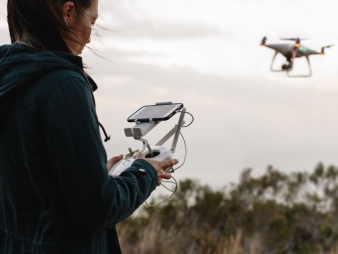Late in 2020, the Federal Aviation Administration (FAA) announced their final rules for Unmanned Aircraft (UA)/drones. At present, there are over 1.7 million drones registered in the United States and over 203,000 FAA-certified remote pilots.
Under the new rules, starting in 2023, drones requiring registration will need remote identification. Many of the recently manufactured drones already have this capability. The remote id will assist in expanding drone operations. The FAA under certain circumstances with appropriate training and proper equipment will allow expanded use of drones allowing flights over people, moving automobiles, and at night.
This is a giant step toward allowing package delivery to your door step by drone. Amazon edges closer every day to incorporating drone delivery with Wal-Mart also exploring drone delivery of smaller packages.
Enabling flight over crowds and at night will allow expanded use at sporting events. Last summer, with minimal crowds, drones were used in the production of NASCAR automobile races with great success.
Allowing drones to fly over crowds, automobiles and at night will also soon find expanded use in law enforcement as well as emergency services. In the not so distant future, it is anticipated drones will be at the scene of an emergency providing first responders with video of the circumstances allowing them to prepare for the emergency while maneuvering through traffic.
While the remote id rule will apply to all operators of drones that require FAA registration, operations over people and at night will require proper license meaning it will be limited to part 107 operators.
The final rule requires small drone operators carry their remote pilot certificate and identification in their physical possession when operating.
In the past, part 107 pilots were required to take a recurrent test every 24 calendar months. This requirement has been updated to a requirement for updated recurrent training that includes operating at night.
The rules become effective 60 days after publication in the Federal Register. The Remote ID rule includes two compliance dates. Drone manufacturers will have 18 months to begin producing drones with remote ID, while operators will have an additional year to start using drones with remote id.
Many aftermarket products are already appearing to upgrade existing drones to include small led lights that are visible up to three statute miles and have a flash rate to avoid collision. Manufactures will also create compliance certificates defining certain classes of operation that will be required by the rule.
Drone owners and operators are encouraged to read the FAA press release of December 28, 2020 and the related commentaries contained therein as the changes are a substantial change in current laws.
Over the next weeks, further clarifications of the rule and responses of the manufacturers are expected as well as input from AOPA.
The press release may be found at FAA.gov.
Attorney Kim Rose, is available for more specific consultation.
Tagged In:DronesFAAUAUnmanned Aircraft




